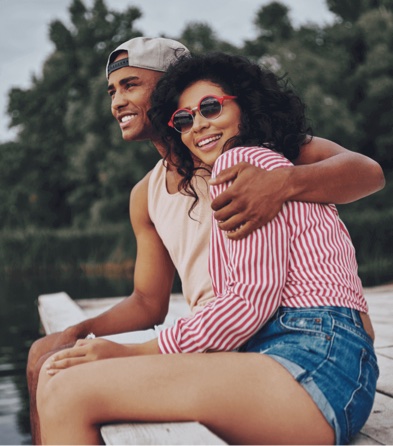5 Things to Do in Little Tokyo, California
Never been before? We’ll be your trustee Little Tokyo guide with a day’s worth of fun things to do in Little Tokyo.
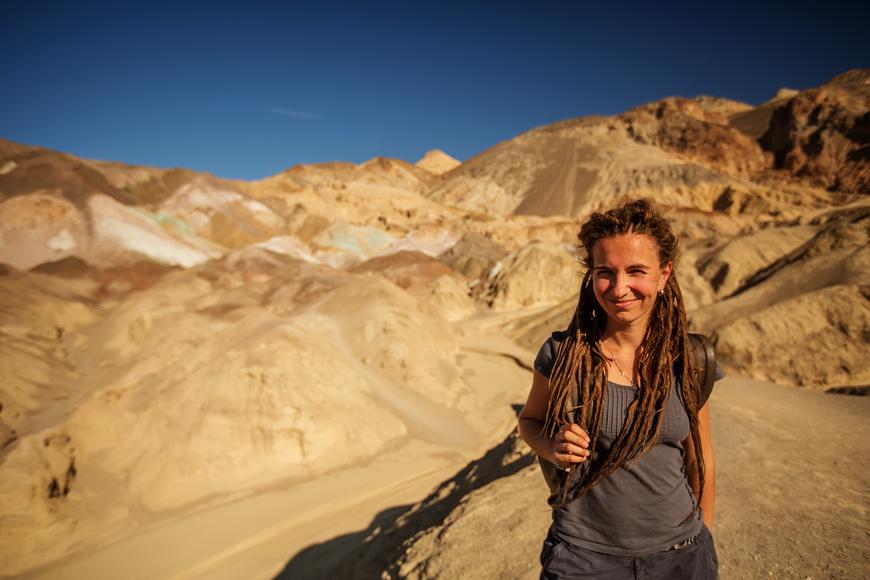
If we had to describe Death Valley with one word, it would have to be ‘extreme’. The name speaks for itself, after all. Scorching heat, low elevation, and dry weather characterize this eastern California national park. However, it would be unfair to undermine the natural beauty of Death Valley.
The challenging conditions of this popular destination become a mere inconvenience when you witness the sprawling landscapes and breathtaking views. Spanning over 3 million acres, it is a hotspot (quite literally) for a variety of outdoor activities, hiking is one of them. Despite the soaring temperatures, Death Valley hikes are more common than one might think. And the variety of trails to choose from is great for exploring the area’s dunes, deserts, ridges, valleys, and everything else in between.
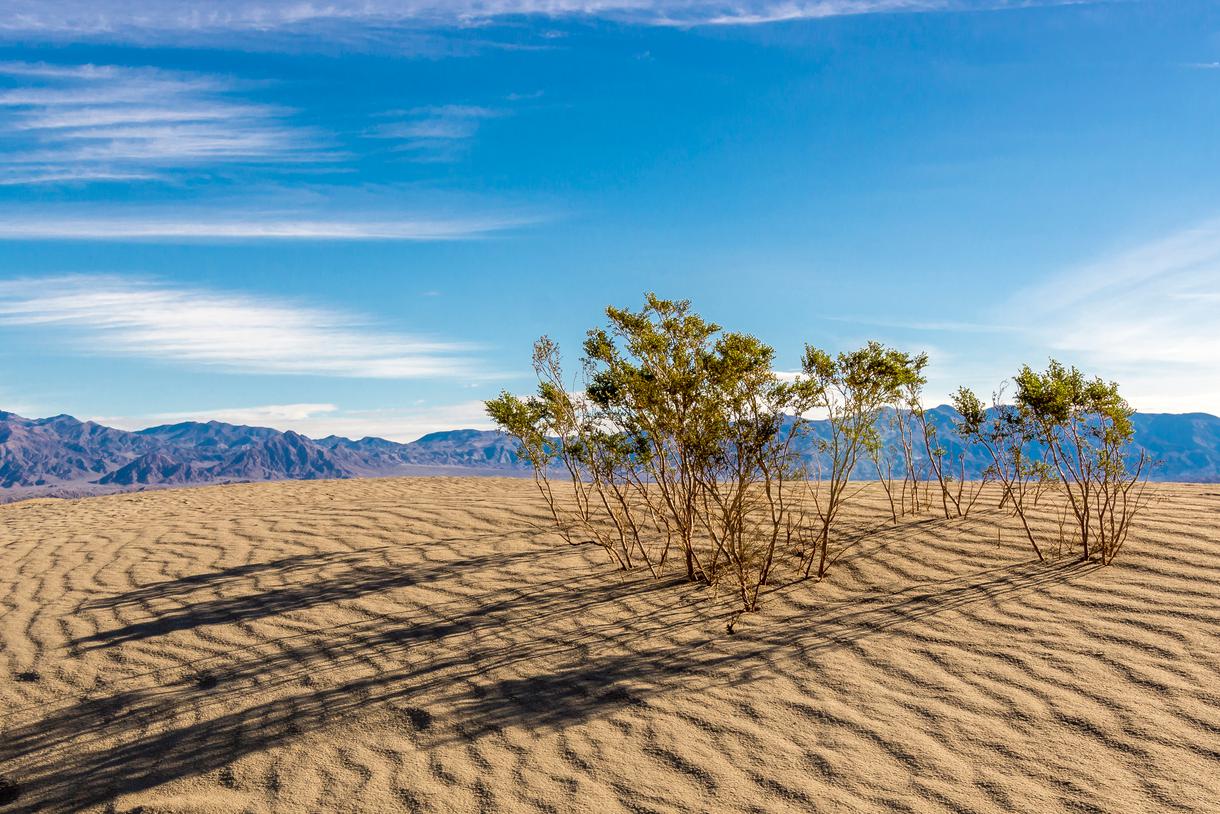
Difficulty level: easy to moderate.
Situated in the Stovepipe Wells Village, the Mesquite Flat Sand Dunes are among the most well-known and accessible dune sites of the Death Valley National Park. Rugged mountains provide a scenic backdrop to almost infinite piles of sand adorned with old mesquite trees. Summiting the high dune involves a 1-mile hike that takes somewhere around an hour. There isn’t really a fixed trail so you’ll be trekking through ever-shifting sands.
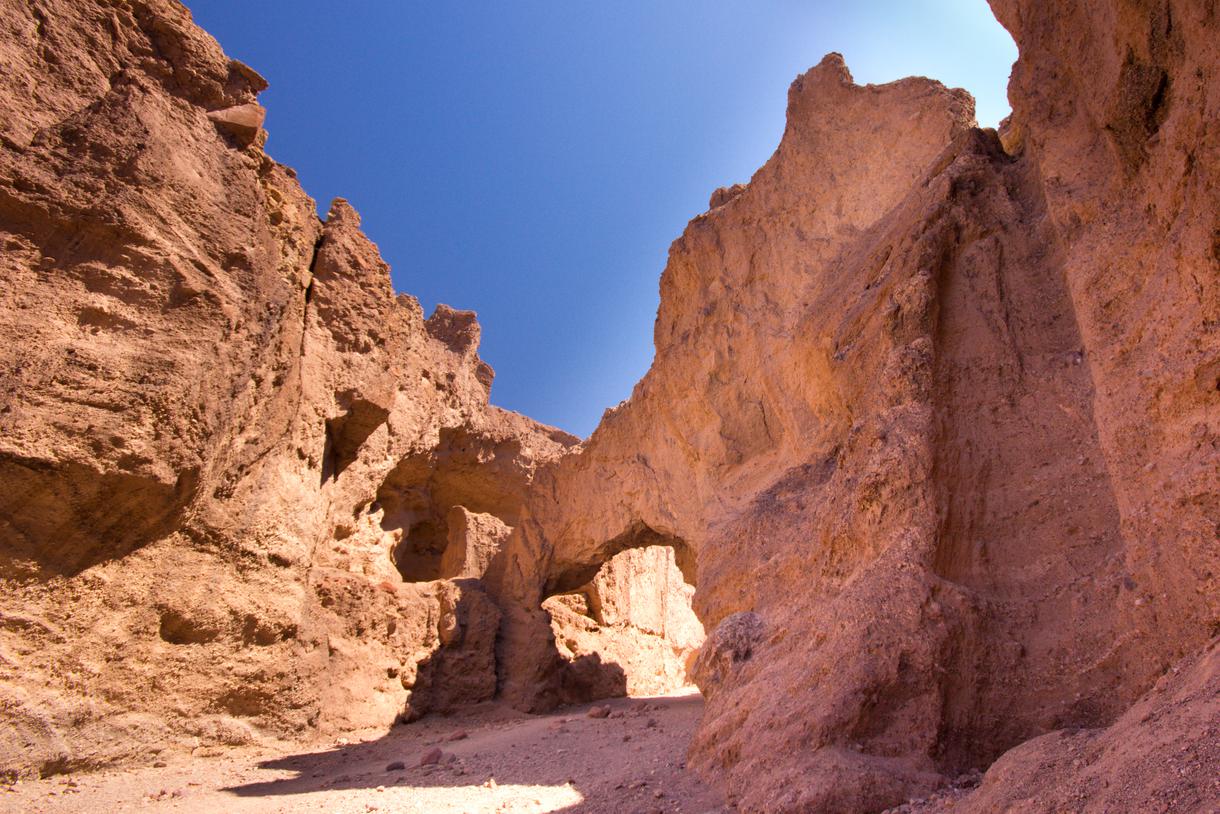
Difficulty level: easy.
The Natural Bridge Canyon Trail is a 45-minute out-and-back hike that takes you to, as the name suggests, a naturally formed bridge. This Death Valley hiking trail involves a gravel path ascent towards a canyon that gets narrower as you go, before widening beneath the natural bridge. Make sure to stay hydrated because although the trail is a short one, it’s an uphill trek with no shaded areas.
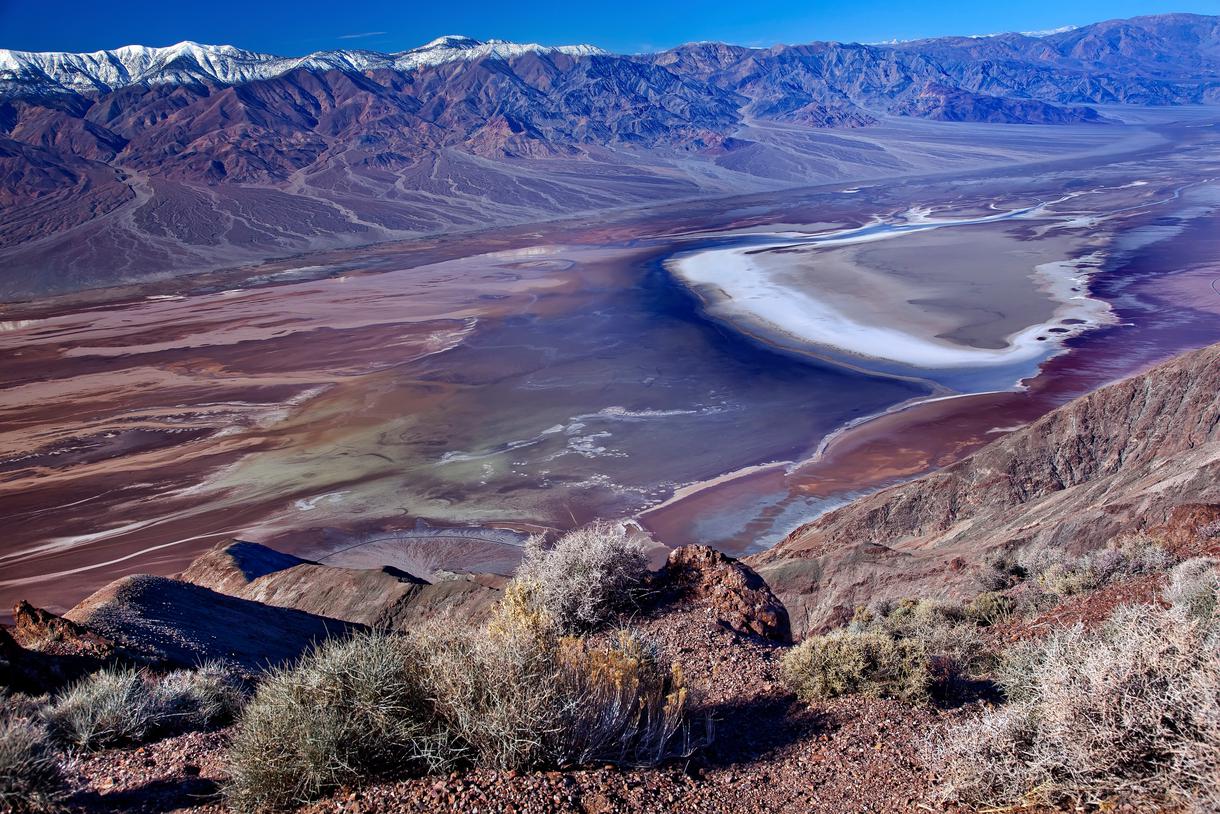
Difficulty level: advanced.
The hiking trail along Dante’s Ridge offers an abundance of sweeping views of the California valley along the way. With a total elevation gain of 1,200 feet, the 8-mile round trip takes around 5 hours. The hike kicks off at Dante’s View, a popular spot from which you can admire the mountains in the distance and the salt flats below. It’s no surprise that this trail is among the most beautiful in Death Valley.
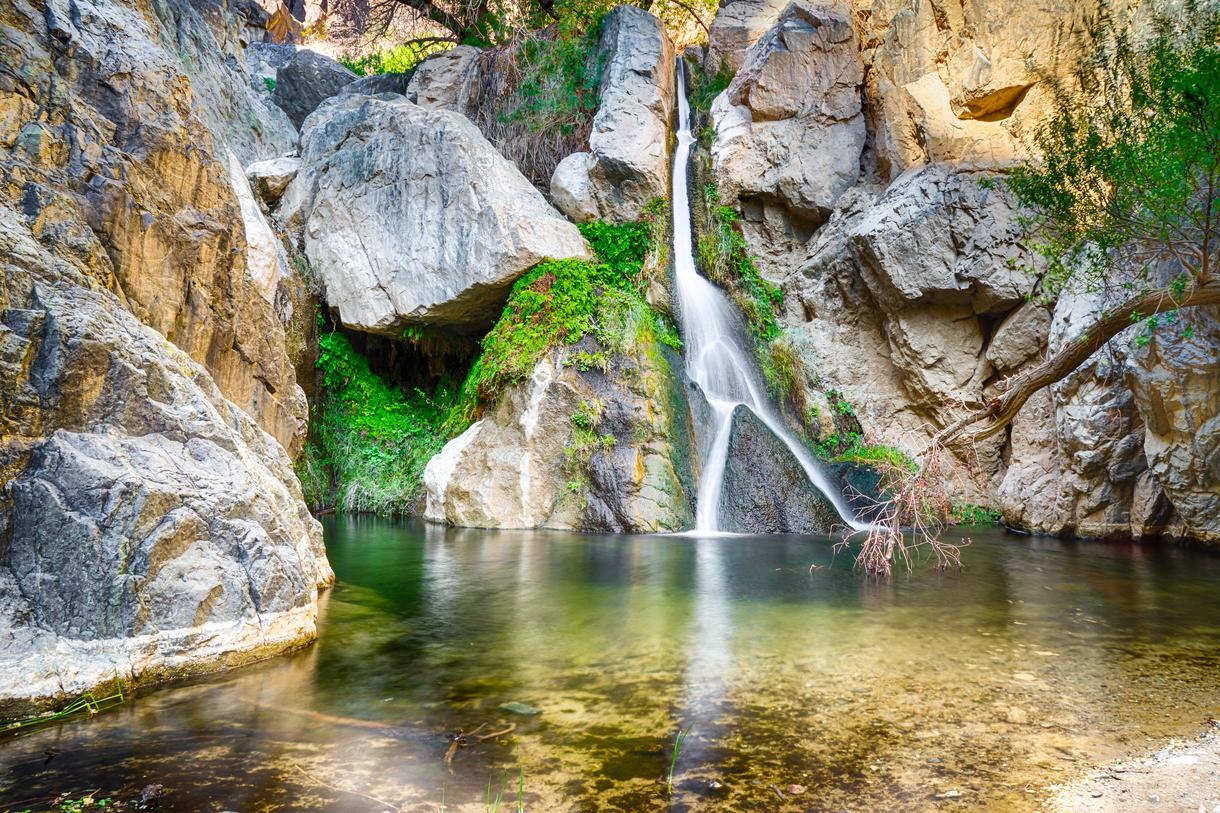
Difficulty level: moderate.
Who would’ve thought that a waterfall would exist in the middle of a desert? Apparently, it does, and Darwin Falls is the proof. This desert oasis features a spring-fed waterfall flowing from rock formations adorned with lush greenery. It’s also a popular desert hiking destination because of the much-needed shade it provides.
The 2-mile out-and-back adventure takes about an hour and a half and involves some rock climbing, crouching under tree limbs, and crossing rivers. You’ll pass through a dusty canyon before making your way to the enclosed oasis. However, entering the pool is forbidden because it’s the source of drinking water for the nearby Panamint Springs Resort.
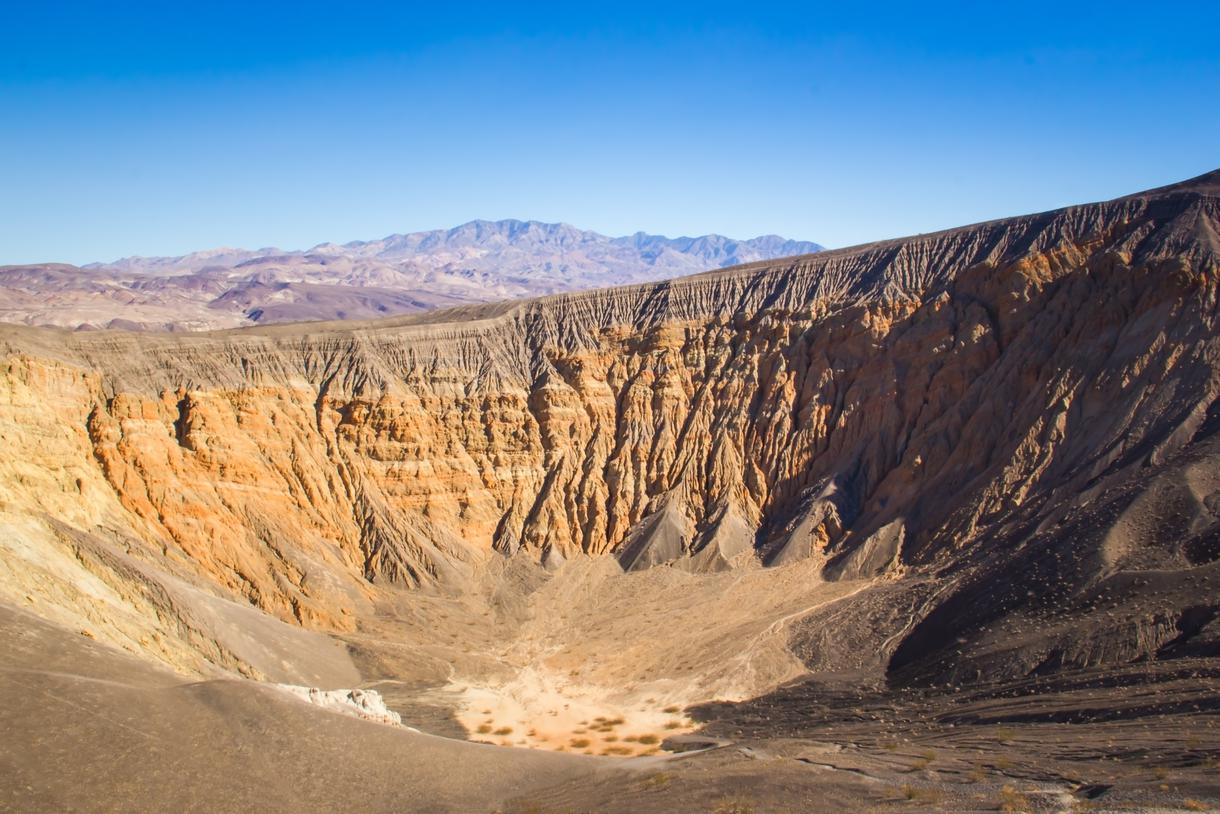
Difficulty level: moderate to advanced.
Ubehebe Crater is a 600-foot-deep, half-mile-wide opening in the ground that took form due to molten lava coming in contact with groundwater. Although a common destination for hiking, the exposed edges of the Ubehebe Crater Loop make it unsuitable for beginners and anyone with a fear of heights. The 1.5-mile loop is best done counterclockwise, putting the uphill portion at the start.
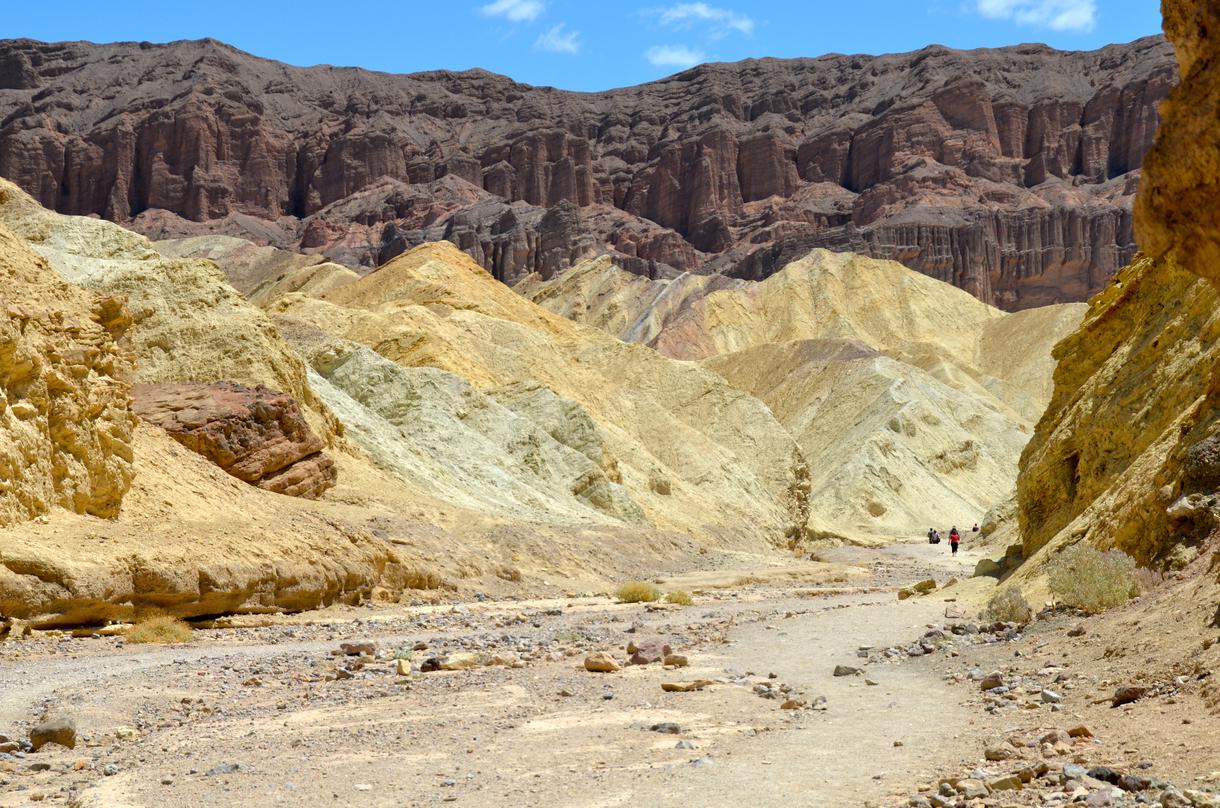
Difficulty level: moderate.
Golden Canyon's Gower Gulch Loop is one of the most scenic hikes in Death Valley — one that you don’t want to miss. You’ll see a range of colorful rock formations along the trail before making your way to the Red Cathedral (you’ll find out why they call it that once you see it). If you’re seeking a little more adventure, consider hiking into the canyons along the way. One interesting fact about Golden Canyon is that it served as a filming location for several Star Wars scenes.
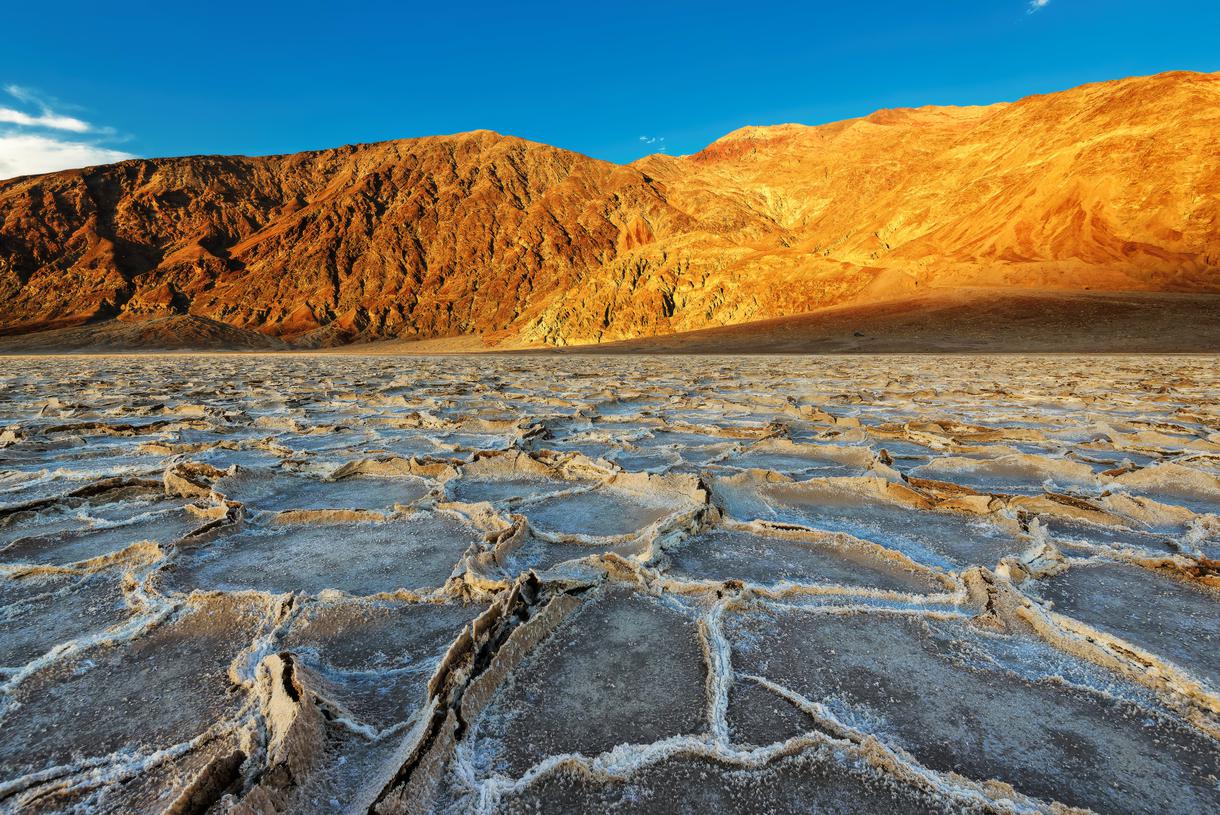
Difficulty level: easy.
It would be a shame to talk about hiking trails in Death Valley without mentioning the Badwater Basin. Not only is it one of the most interesting features of the national park, but also the lowest point in North America — being 279 feet below sea level. The trail starts with a boardwalk that takes you to the basin’s edge, from which you can step onto the salt flats. While the distance to the other side of the salt bed is 5 miles, you can hike as far as you want.
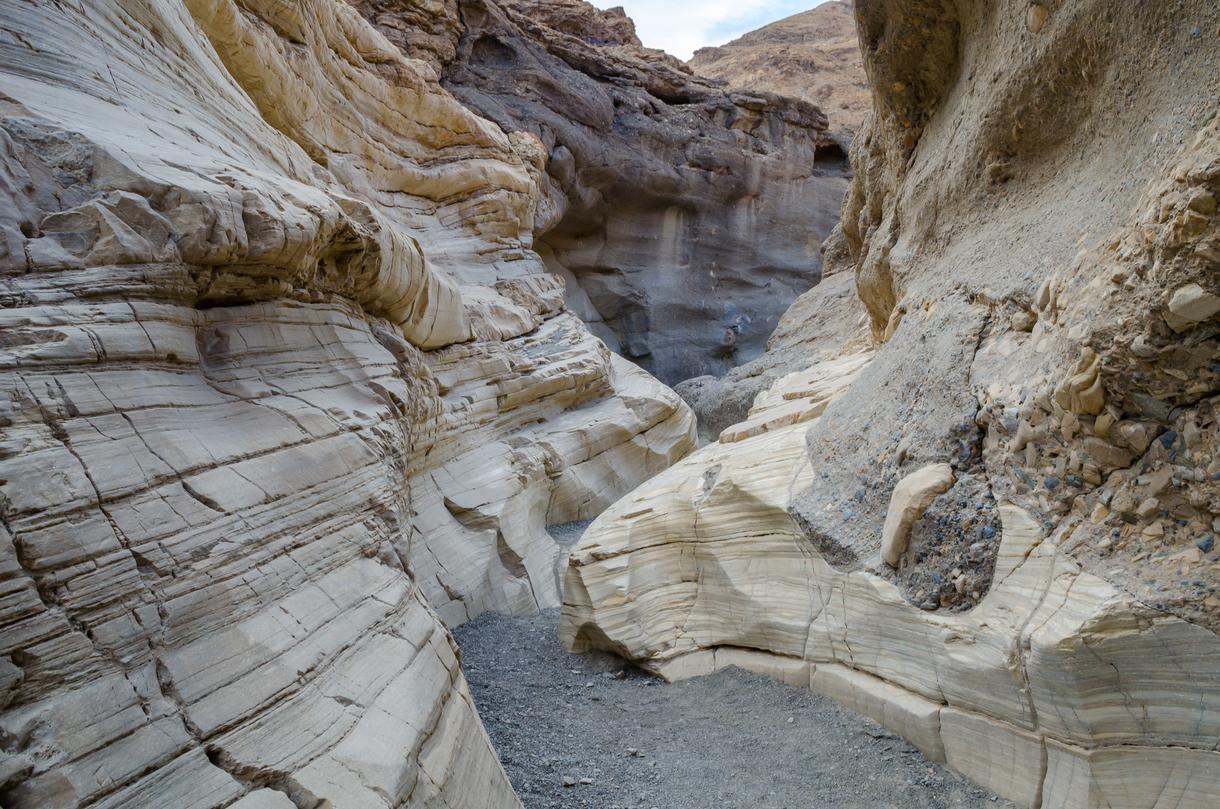
Difficulty level: moderate to advanced.
The Mosaic Canyon Trail is one of the best places for hiking Death Valley has to offer. Starting at a rocky wash, the hike takes you right into the canyon’s heart. You’ll come across narrow paths hugged by massive marble-lined walls which are cool to the touch. The canyon walls help in keeping the temperatures relatively low, making this 3-hour hike less challenging.
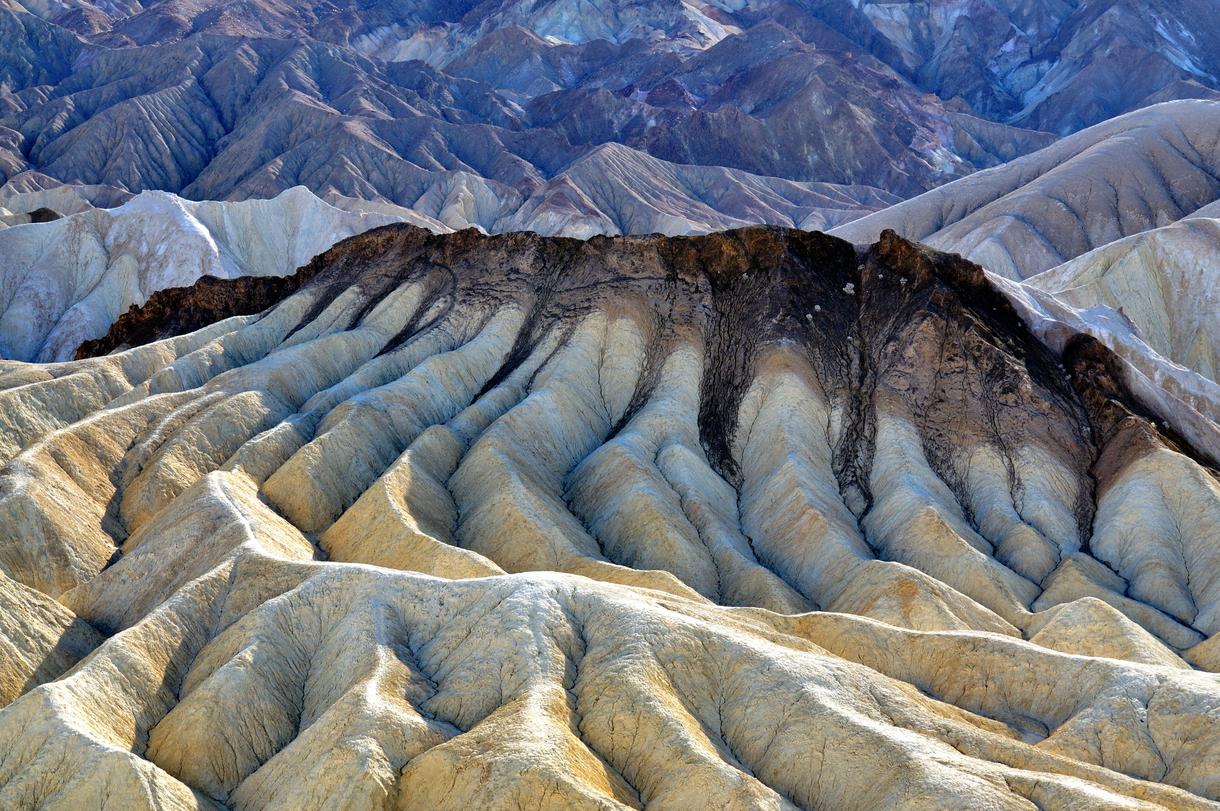
Difficulty level: depending on the trail.
The jaw-dropping beauty of Zabriskie Point draws waves of photographers who come for the views at sunrise. The site also offers several hiking options. Beginners can take the 0.6-mile out-and-back trail while experienced hikers can continue down the path, summiting hill after hill while admiring the picturesque views. Zabriskie Point draws quite a lot of visitors so make sure to arrive as early as you can.

Does your business rank among the best in California?
nominate a businessLearn more about our selection criteria and vetting process.
To make the best out of your hiking adventure in Death Valley, it’s always a good idea to come prepared. That includes knowing when to go, what to wear, and what to bring.
It’s safe to say that summer isn’t the best time to go hiking in Death Valley. Temperatures often begin to climb above 110 degrees Fahrenheit around late April. By June, you can expect those numbers to reach 120 degrees, if not more. Plan to go around early spring or late fall when temperatures range between the 60s and 80s. Winter is also a good time for a Death Valley trek.
Nothing can ruin your hiking trip more than realizing you desperately need something that isn’t available for miles. Keep in mind that Death Valley isn't like any other national park; conditions can be harsh and unforgiving if you’re unprepared. That being said, make sure to bring enough drinking water and — we can’t stress this enough — sunscreen.
It’s important that your Death Valley adventure is as safe and comfortable as possible. Make sure to wear hiking boots with decent traction since tripping hazards are common. And considering that shaded areas are pretty rare in Death Valley, wearing a hat and sunglasses is an absolute must.


Never been before? We’ll be your trustee Little Tokyo guide with a day’s worth of fun things to do in Little Tokyo.
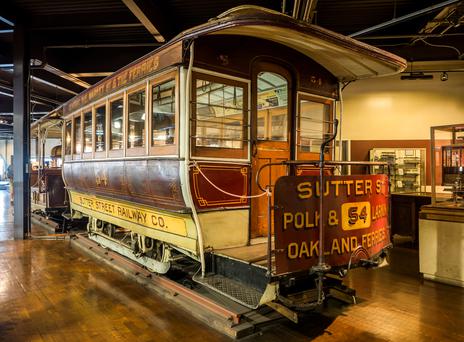
If you're looking for something fun to do, there are plenty of fun and free things to do in San Francisco, use our guide to help make plans.
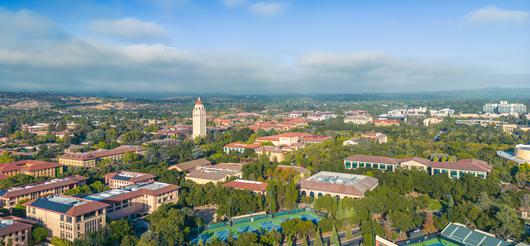
Feel the knowledge flood from its elegant red-tile roofs as you wander the town’s beautiful college campus in search of hidden finds.

Enjoy the perfect California spring weather at these ideal spots for a spring vacation in California.
